Guerrilla growing weed: crucial tips and tricks
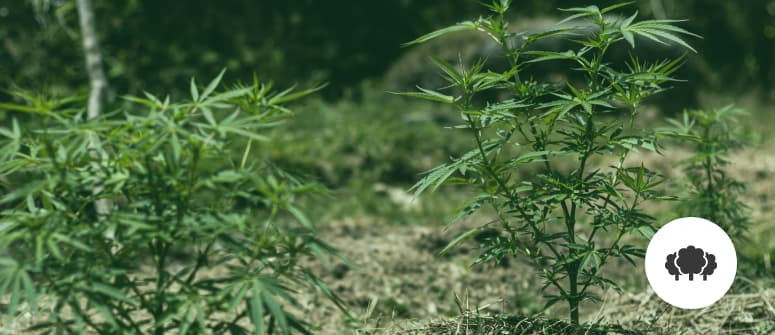
Growing cannabis in the wild—aka guerrilla growing—can be exciting and rewarding, but there are a fair few potential risks to consider as well. Consider our top tips to ensure your covert weed-growing efforts are fruitful. With a little planning and patience, a high-quality harvest awaits.
Contents:
Though cannabis has become more and more "legit" in recent years, guerrilla growing is still a popular practice in many parts of the world.
This kind of cultivation is cheaper than setting up an indoor grow room, and safer than cultivating on your own property if you live in a location where cannabis is not yet legal. There is no equipment to buy, no electricity cost for indoor grow lights, and no smell to alert your neighbours.
That said, there are plenty of risks that come with guerrilla growing cannabis. Being discovered by the fuzz is one, as is having your precious crop nibbled, trampled, or destroyed by deer, rabbits, other four-legged intruders, and, of course, pests of the insect kind.
Embarking on this operation takes a bit of guts, quite a bit of planning, and a dedication to “wild weed” cultivation. There is no exact science to a successful guerrilla grow, but it chiefly comes down to picking the right strain, the right location, and planting at the right time.
Ultimately, you want an accessible but rarely trafficked, remote area that does not require you to rappel in or take a helicopter trip to check on and care for your weed plants. You should try to visit your grow at least once a week.
What Is A Guerrilla Grow?
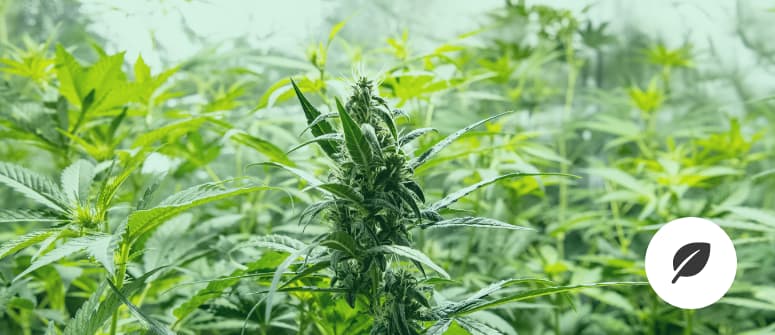
Simply and technically, a “guerrilla grow” is a term that refers to growing cannabis somewhere well-hidden in the great outdoors. Generally, it's carried out by cannabis growers that eschew expensive lights, equipment, and even their own real estate—instead, planting cannabis in secret spots, on land they do not own or rent.
People drawn to this practice are usually cannabis aficionados who cannot grow at or near their homes. Parents, roommates, and neighbours are all potential obstacles that can be avoided by picking a cultivation spot far away from the same—as well as other casual intruders or passersby.
Beyond this, the method is one where you only use natural resources to grow your marijuana plants. You do not want to get caught watering your secret garden. As a result, the best places to grow are ones where the plants receive a good amount of sunlight and there is a water source nearby. Finding a relatively bug-free, and animal-free, environment is also important.
The spot also must have a fair amount of vegetation already—preferably of the complementary kind so the plants do not stand out (including their odour). The goal is to plant your crop, and return to harvest it with minimal visitation and plant care.
What Are The Pros And Cons Of Guerrilla Growing Weed?
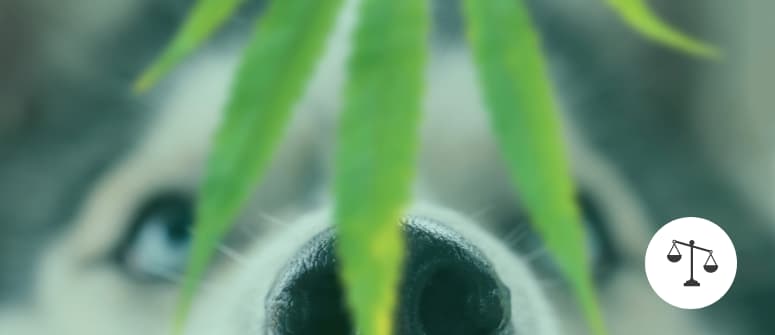
Pros of guerrilla growing:
- Cheap
- Low-maintenance
- More discreet/less chance of being caught
- Harnesses natural resources
There are some obvious advantages to growing guerrilla. The first is that you are far less likely to get caught. You do not have to worry about neighbours complaining about the smell to local law enforcement. You also take advantage of growing outdoors, where the cannabis plant naturally thrives. If you choose a strain that is hardy and right for your growing environment, why not cultivate a few cannabis trees under the sun? Guerrilla growing is also cheaper than any other kind of cultivation, including backyard grows, simply because you are literally allowing nature to take its course.
Cons of guerrilla growing:
- Anyone can stumble across your operation
- Harder to protect against pests and adverse conditions
- Requires you to leave your residence
- Potentially smaller yields
However, there are also a lot of risks. You have no control over who accesses the site. Beyond the plant’s natural defence mechanisms, there is no protection against bugs, larger animals, and storms. Rabbits are a major threat—from upsetting the grow via burrowing to even nibbling on your specimens.
Setting up chicken wire containment areas is one solution to this problem, but this is also a tip-off to anyone looking for illicit cultivation that this is not an “accidental patch” of wild cannabis.
Visiting too often is also a bad idea, even if you have the time. Depending on how remote the spot is, you might be reported to the authorities by locals who spot your car repeatedly going in and out of an area, particularly in the early mornings or late evening hours. The smell also might give the grow away, even in the wild. That is why it is so important to pick the right spot and use the right naturally occurring camouflage.
The last potential downside to consider is that since you’re not there to give the utmost love and care to your plants, the final yields may not be as large, and the buds not as potent, as if you were to grow in or right outside your house.
10 Things To Consider When Setting Up A Guerrilla Grow
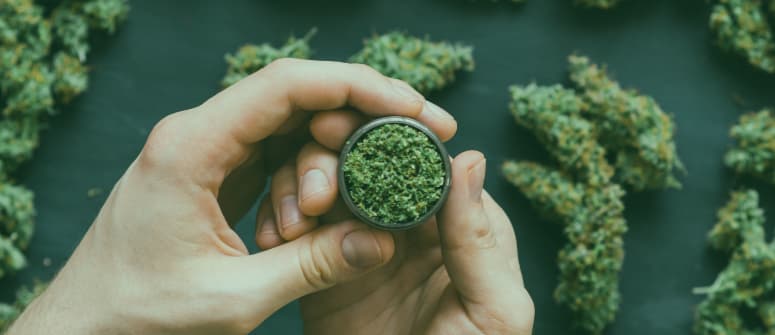
While your grow might be guerrilla by nature, the most successful cultivators who implement this method are careful and meticulous planners. Remember that the whole point of this is to make your weed cultivation look “spontaneous”, even upon relatively close inspection. Furthermore, in order for your plants to survive and thrive, they require certain environmental conditions.
With that in mind, below are 10 important factors to consider before setting out on your first wild weed grow. These tips will empower you to raise marijuana plants glittering with potent, high-quality buds come harvest.
1. Strain choice
One of the most important aspects of your grow is strain choice. Autoflowering strains are a good selection for this kind of cultivation—starting with a faster grow cycle. Auto strains are also not photoperiod dependent—meaning they will initiate flowering no matter the season. They also tend to be shorter, which means the plants will be easier to hide.
However, auto cannabis plants traditionally put out smaller yields than photoperiod strains (though modern autos are breaking this trend). That said, hardy photoperiod strains with a natural resistance to pests are suitable as long as you plan your grow accordingly.
2. Climate and timing
A vital tenet of guerrilla growing is to be in harmony with your surroundings. Obviously, starting a crop—even an autoflowering one—in late autumn or the middle of winter is not the best idea. What is a good idea, however, is to choose a strain that is resilient to adverse weather, as you never know what Mother Nature will throw your plants' way. Patience is also required here. A late-season freeze could kill your young and vulnerable plants if left outside too early. In the US and Europe, May is usually the best month for planting. September and October are generally the best months to harvest.
3. Cannabis seeds or clones?
Many aficionados of guerrilla growing advise against growing from seeds. Instead, they plant clones or seedlings once they are about 30cm in height—meaning you could start the plants at home. At this point, the plants can be safely transferred to your hidden spot without it being too conspicuous. When you do transfer your young plants, be sure to give each one plenty of room for their root system to develop.
4. On the ground or higher up
Location, location, location. If you must grow in the ground, try to find a place that is well off the beaten path. Remember that as your plant matures, it will have a distinctive odour that could attract both thieves and authorities. Also, note that drones have radically changed the equation for both good and bad. If possible, try to find a location that is both remote and higher up. Nobody looks up. Growing on the rooftop of an abandoned building or in a specially constructed treehouse are both options that get your cannabis out of harm’s way on the ground. Though, if found on a roof, it's going to be obvious that someone is growing as opposed to a rogue seed found in the wild.
5. Use more than one location
Don’t tie yourself to just one spot. If you plant in fabric pots, you can move your plants around more easily while avoiding detection. It is also a good idea to grow crops in a few different locations; if one gets busted, you'll have at least one more ace up your sleeve.
6. Nearby water source
Make sure you are close to a source of free water, for all the obvious reasons. If cannabis flowers go without water, including from rain, for extended periods of time, they can suffer potentially fatal consequences. Be prepared, if necessary, to visit your weed plants at least once a week to make sure they have enough water.
7. Plant near other vegetation
Look for natural camouflage, which also includes pungent flowers and plants with the capability to compete with the smell of cannabis plants. Forest clearings and abandoned farmland are great spots for this kind of cultivation.
Likewise, there is a whole science to hiding the smell of dank with companion growing. Obviously, this is easier in a garden at home, but if you find a perfect guerrilla spot, there is nothing wrong with planting other kinds of crops there too—particularly those that enhance the security of your crops from all predators of the winged, four-legged, and human kind.
8. Enough sunlight
This is a critical aspect of your guerrilla grow. Light is one of the main ingredients of a successful grow—no matter where you are. If you plant your crop in the middle of a remote forest, you might succeed in growing in splendid, undisturbed isolation, but will your babies get enough light to flourish?
9. Good soil
You are not going to be around to imbue the soil with additional nutrients as much as you could at home (although you should consider adding a natural fertiliser to give your plants the boost they need). This is why natural soil quality is so important for this kind of cultivation. The plant needs to grow strong enough to support those fat buds. If you are scouting multiple locations, you might also take soil samples of your target grow area.
You may be able to help a bit with additional nutrients when you return to water, but a solid foundation is better than making your plant struggle to survive on its own. The existence of brambles and stinging nettles are evidence of moisture-rich soil. Stinging nettles are also indicative of well-drained soil that is conducive to plant life. Plus, of course, they keep out the wandering humans—like hikers and birdwatchers—who might pass by. You can also add to the water retention of your plants by mulching them with leaves. You might also invest in potting soil with perlite and vermiculite, which you can use to augment the natural soil around the base of your plants.
10. Pest protection
Your guerrilla cannabis grow will have to fend for itself in the wild. This is why it is so important to look for companion plants—because they will help to ward off pests naturally. Beyond this, look for places that attract ladybugs—one of the best natural lines of defence against aphids and other plant-eating pests. Organic pesticides are another option, but again, application of the same means additional trips, and therefore increased risk of detection. This is also where strain selection also is important. Some cannabis strains are naturally more resistant to pests.
How To Maintain A Guerrilla Cannabis Grow
There is one large factor that will likely influence the success of your guerrilla grow beyond all others—timing. Plant too early, and your crop may fall victim to cold temperatures and frost. Plant too late, and you are looking at mould problems from autumn showers.
If you are growing photoperiod cannabis (as opposed to an autoflowering strain), you must make extra effort to follow the seasons. You are now a farmer, and there is nothing you can do to control the weather. Once you have planted your crops, you will also need to return at least once a week to check on them. Beyond this, it is pretty easy to let nature take its course. After all, this is the beauty and benefit of going au naturel.
How To Harvest A Guerrilla Grow
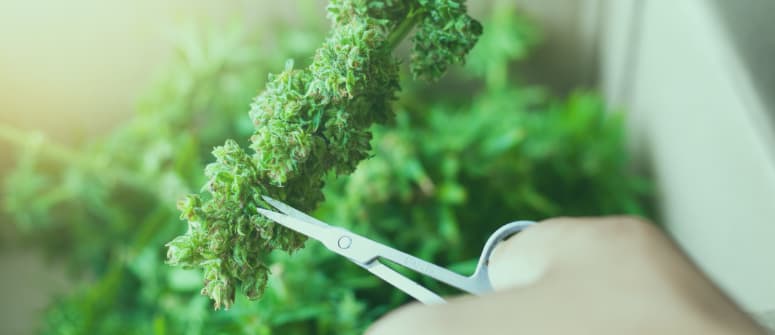
You found the perfect spot. You visited regularly without being discovered. Your cannabis plants have thrived. However, once the summer days begin to shorten, the time to harvest approaches. All commercially distributed strains have tips on when to harvest. Some plants need to be gathered in late September; others do better with October harvests.
Beyond this, try to keep your expectations about yields realistic. Your guerrilla plants are unlikely to produce maxed-out harvests. Moreover, expect at least some of your specimens not to survive.
On harvest day itself, you want to collect your crops as fast and covertly as you can. You do not want to spend a long time trimming in the open. Work fast, chop the plants, and place the harvest in airtight containers. Another option is to just take plastic bags with you, cut down the plants, and wait until you are in a safer, more controlled space to transfer them to airtight containers for trimming and curing.
After The Guerrilla Grow
If you love your location, have escaped notice, and are ecstatic about your results, consider improving your grow spot(s) over the fallow period. Spread fertiliser, or plant cover plants to add a little juice back to the soil and make it that much more fertile for the next year. Plants such as clover or hairy vetch enrich the soil naturally.
Guerrilla Growing: Sometimes The Best Option
It is not the easiest thing to do, but sometimes it is your only option—especially when you must cultivate in secret. With a little practice, however, guerrilla growing cannabis plants can be a very rewarding endeavour.
Plan, be prepared, and stay safe.




